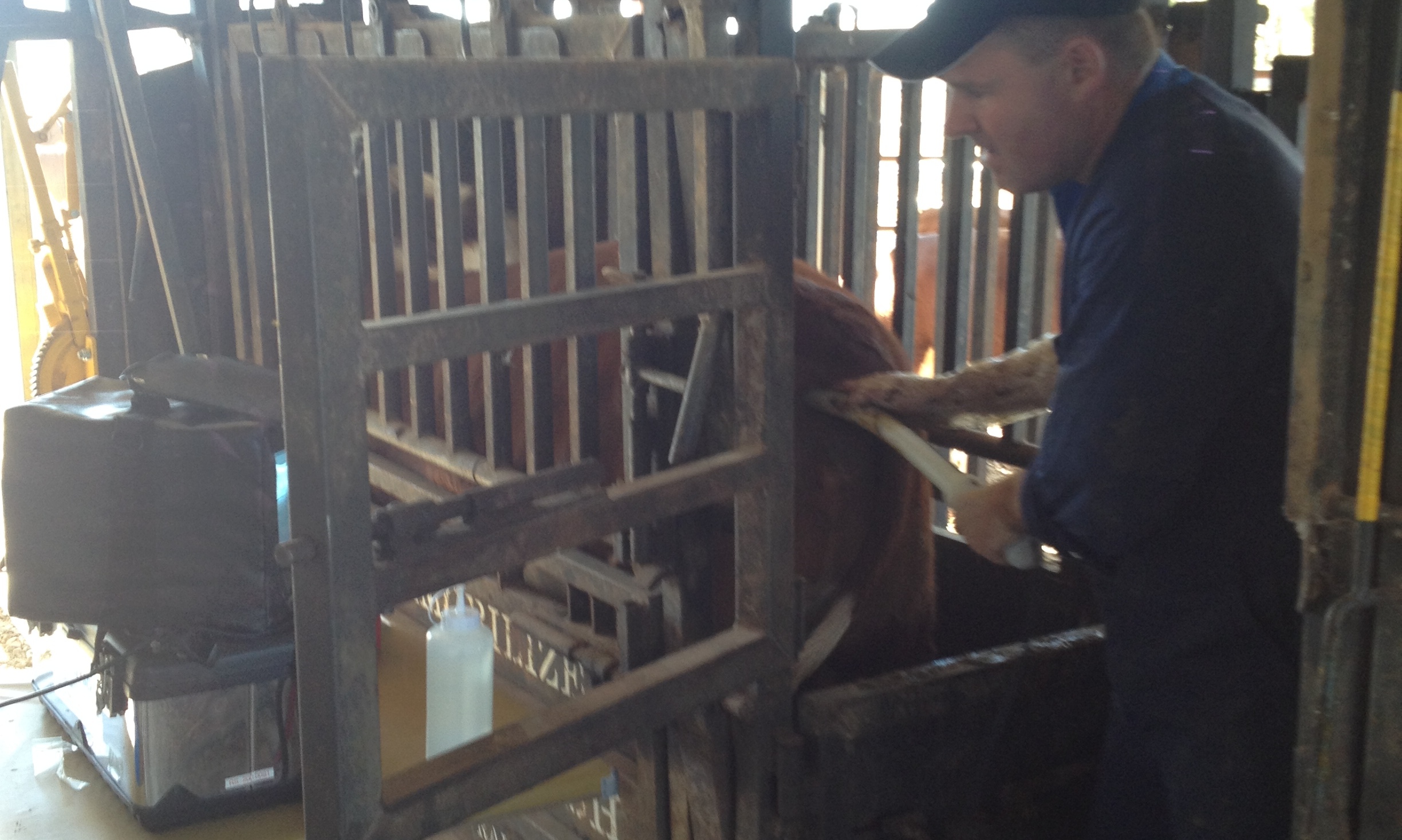I really enjoy working with cattle. Getting cattle to move through yards, or into new paddocks does take some skill. I firmly believe there is no such thing as a born animal handler. I reckon the skills you need to work with animals are developed, like any skill, through practice, observation and continually trying to do better.
What I think some people may be born with is a higher degree of patience, as they develop their skills. I think some people are also more empathetic to cattle or animals, and are willing to work with the animals, trying to understand the animals movements and directing them in the desired direction. It is important to be patient and to understand the animals you are working with.
Being patient doesn't mean your work has to slow down to a crawl! Patient in my mind means taking a mental breath and thinking through what you are trying to achieve with the animals you are working with. It means responding to their actions and anticipating what the animals are likely to do or want to do in response to you, to other people or to their environment.
I reckon its also a bit of self awareness. Are you actually prepared to take some time, a few breathes to think about things. To consider the impact your actions might have, and to learn from mistakes or from the past.
Some people just don't seem to be willing to be patient. And this has created so many issues for them, for their cattle and for the people around them.
If you really want to develop better skills in working with cattle it takes patience, understanding and practice. I've talked about patience. So what about understanding?
There are some basic things to understood with cattle. Firstly cattle are prey animals. Which means they are used to running away from danger. They need to be with others, so they can all look for danger, and if they can't get away from the danger, then they will use their size and speed to attack the predator.
Its not rocket science! We all know that, and everyone wants to talk about flight zones. The area between an animal and a source of danger or threat. Some animals have a bigger zone than others.
Its pretty clear what happens when you step into that zone. The animal either moves away or does its best to get away.
But some animals will react differently. There may be past history or circumstances that cause that animal to take on the source of threat. It could be a cow with a new calf. A bull with some cows in a mob. Or it could be a cow kept in a pen on its own and it is so frightened that everything is a threat.
In the last few months I've heard of two people in NSW seriously injured by bulls. Now I'm not sure what the circumstances are for both of those incidents, and I reckon its not for me to make an assumption. What I will say is that often injuries occur when people switch off to their cattle.
When I say switch off, its not paying attention to what the animals are doing in response to you. Maybe you switch off because you take things for granted. Maybe its because you assume your skills are excellent! Maybe you haven't even switched on because you don't think about the animals as much as you should. What ever the reason. All I know is that you shouldn't switch off.
If you are using the animals responses, moving in and out of their flight zone in order to direct them to another place, then changes are you are switched on to the cattle and you can react to animals that might not want to move away and instead want to take you one! On the other hand if your approach is to push, shout and intimidate your animals, being unaware of how they perceive you as you force them into complying with you, then one day you could find yourself in a dangerous or unpleasant situation.
So next time you're out with your cattle, try and be more switched on. Be a little patient and think about your skills and the animals reactions to you. That mental pause for a breath might be enough to turn your cattle chore into a good day out for you, your cattle and for everyone else!










